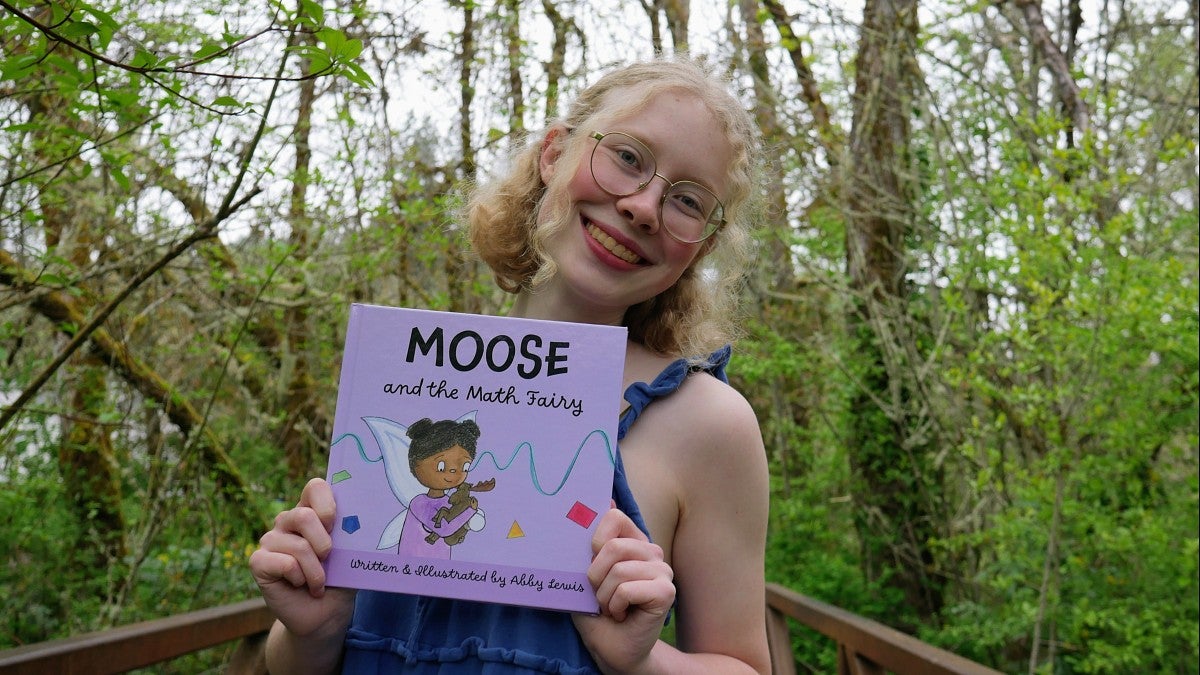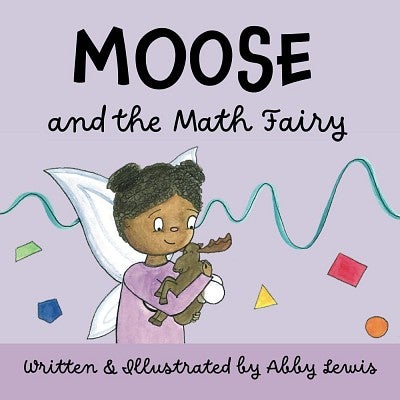
Oct. 11, 2024 - 9:00am
In the education system, there is often a clear division between math and the arts. This division becomes even more stark as students begin to identify themselves as being good at math or excelling in the arts.
Abby Lewis, a fourth-year mathematics and cinema studies major, hopes to change this narrative by integrating math and art in children’s books. Earlier this year, she published her second children’s book, Moose and the Math Fairy.
“I want students to learn that it’s okay to make mistakes and that math is more than just numbers,” said Lewis, who both writes and illustrates her books. “Math is in patterns, and it’s all around us in the world.”
Lewis decided to write a second book after teaching at a math summer camp for early elementary students. Her previous book, The Forest of Numbers, which was published in 2023, was largely geared toward upper elementary students. She wanted to create something that encourages younger students to think critically about math in a creative way.

Moose and the Math Fairy shows young learners that math is “more than just numbers,” she said. When Moose accidentally takes away all numbers and mathematical symbols, the Math Fairy helps him realize that math is all around him, from the arc of a baseball to the area of a fence.
After the success of her first book, Lewis was eager to continue her work in STEM education.
“It was so fun to see all of the support from parents whose kids had read it,” she said. “That’s the most rewarding thing.”
She wants to continue symbolizing the benefits of creative problem-solving in a way that is easy for children to understand.
“Creative problem-solving is really important no matter what you do,” she said. “Creative problem-solving in math is a great way to just learn problem-solving in general.”
Bridging the gap between art and math is important to Lewis, who believes understanding math through art can be much easier. Visuals are critical for understanding mathematical concepts, and math is important for understanding visual art, she said.
In the future, she hopes to see a shift in math curriculum toward a stronger focus on creative problem-solving rather than computation.
“That’s the key part of math, especially in lower grades,” Lewis said.
She also hopes to see a shift in the negative sentiments surrounding mathematics.
“Everyone can do math,” she said.
After graduating, Lewis plans to continue her work in STEM education and work on curriculum development.
“I really want to encourage people think about math from an interdisciplinary lens,” Lewis said. “Math and science are creative subjects, no matter what people say.”
—By Bailey Meyers, College of Arts and Sciences
